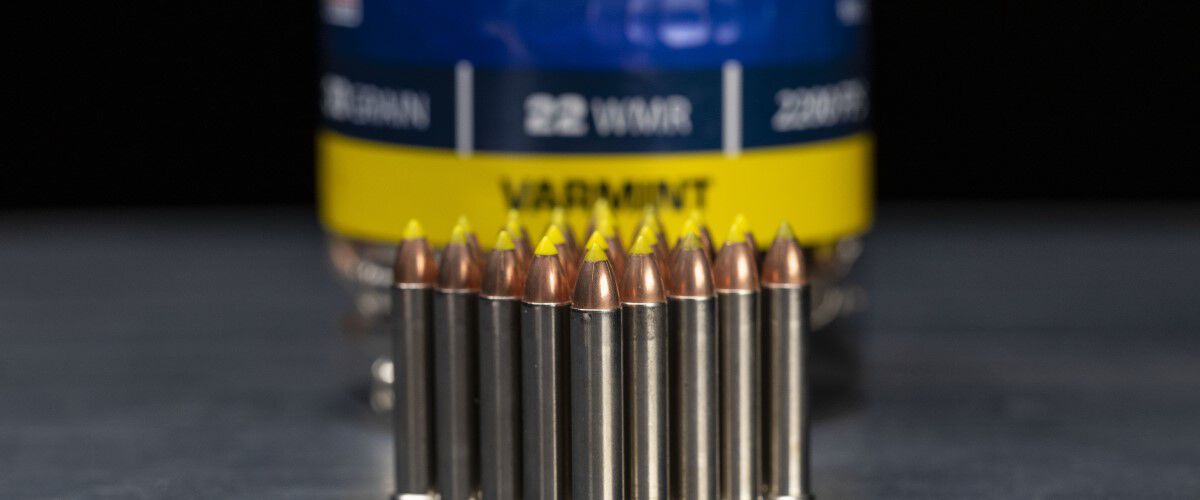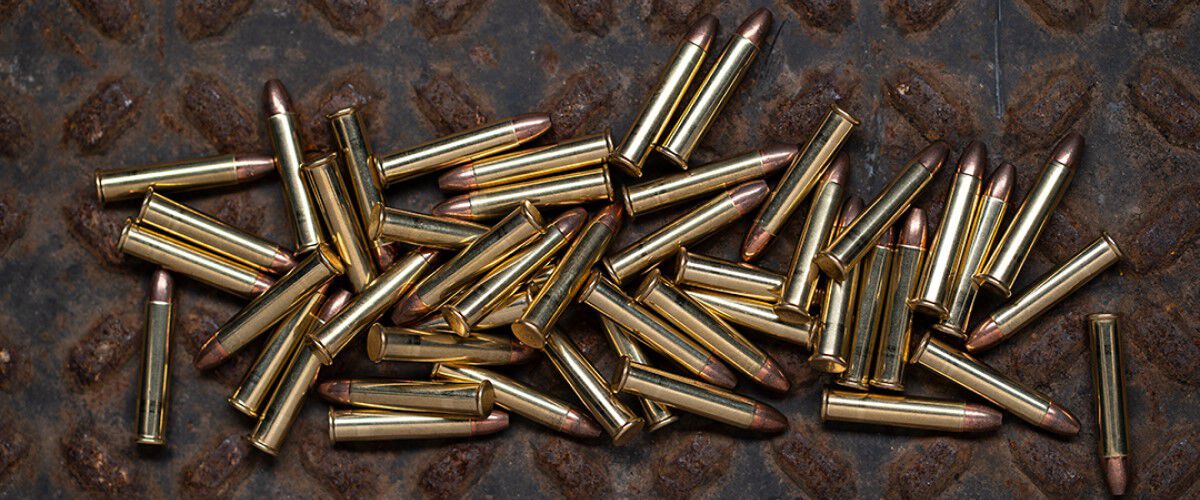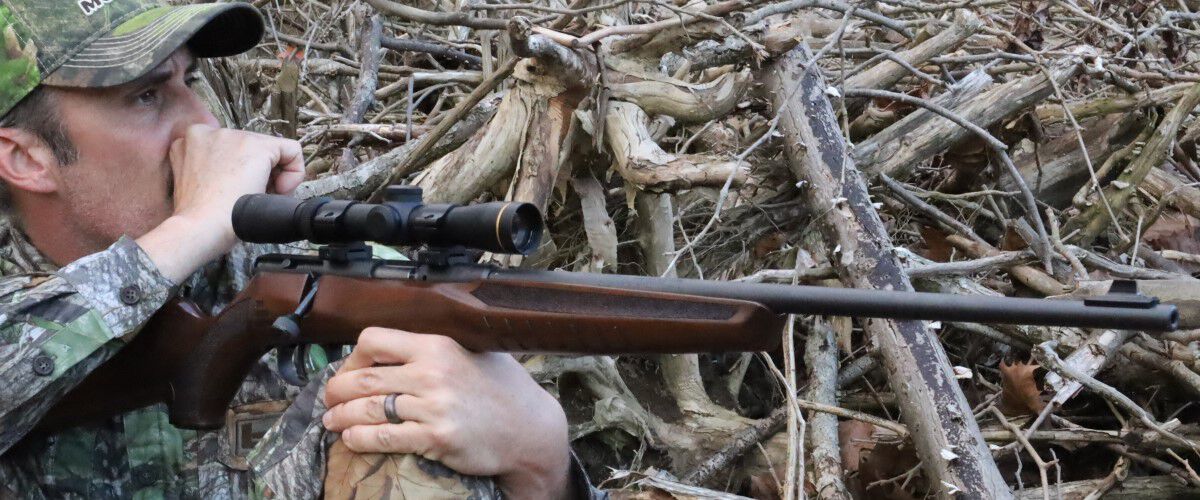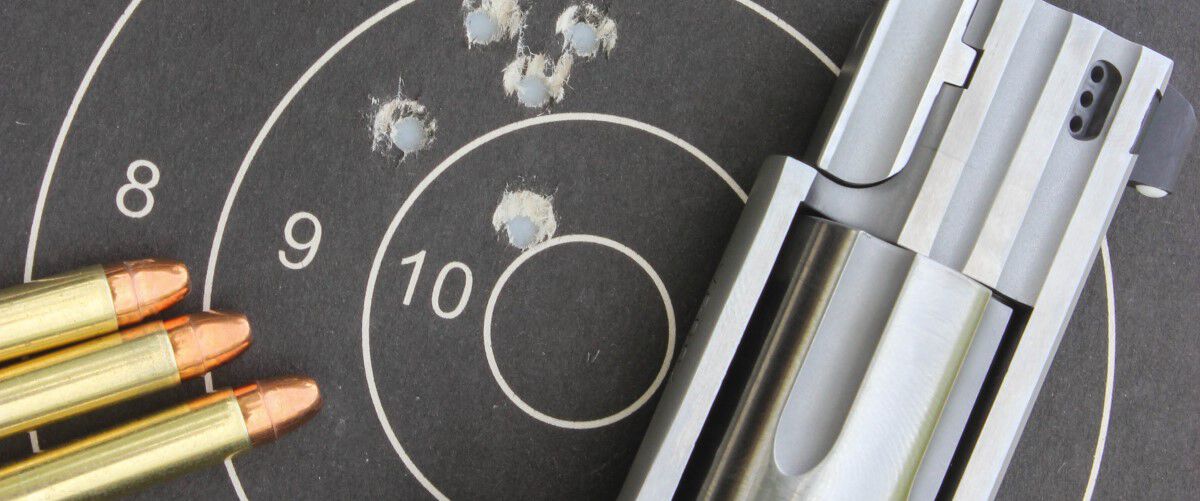The Magnum In Our Midst
By Brad Fitzpatrick

Since its launch in 1959, the 22 WMR cartridge has served shooters in just about every imaginable role. It has been chambered in everything from pocket revolvers to submachineguns, and in smoothbore “garden guns” loaded with shotshell ammo to rid pests and varmints around the home. When loaded with 40-grain bullets, the round will take game as large as coyotes at modest ranges. The 22 WMR is the only significantly successful rimfire cartridge released in the twentieth century, and it offers a level of versatility few other cartridges can boast.
The Facts
It goes by many names—22 WMR, 22 Magnum, 22 Win. Magnum, 22 Win., and probably more. Whatever you call it, the cartridge is outstanding. CCI’s 40-grain 22 WMR Maxi-Mag load pushes a 40-grain jacketed hollow point bullet from a rifle barrel at 1,875 feet per second, and at 100 yards the bullet is still carrying 155 foot-pounds of energy. For comparison, CCI’s 36-grain Mini-Mag 22 LR round, which is no slouch, exits the muzzle at around 1,260 feet per second and strikes with 80 pounds of energy at 100 yards, or about half that of 22 WMR.

The 22 WMR also shoots appreciably flatter than 22 LR. Zero the 22 LR load at 50 yards and it drops almost 2 inches at 75 yards and more than 5 inches at 100. The 22 WMR load, by contrast, hits dead-on at 100 yards when sighted in an inch high at 50, making it simple to hit targets to 100 paces while delivering significantly more punch. It’s worth noting that while the 22 WMR will not fit into a 22 LR chamber, a 22 LR cartridge will, in fact, fit in a 22 WMR. Use caution never to fire a 22 LR in a 22 WMR rifle because of the risk of energy from escaping gasses.
Comparing With Centerfires
If energy charts and flat trajectories spark your interest, then there are 22-caliber rounds that top the 22 WMR. Centerfires like the 224 Valkyrie beat the socks off it, cleanly taking game like coyotes out to a quarter mile or more. But that extra range and punch comes at a price. Centerfire 22s cost more to shoot, recoil and muzzle blast are significantly higher, and rifles are heavier and more expensive.
Do you need what the centerfire 22s offer? That depends. As I write this, I just came back from a hunt in Wyoming where we were shooting at wary coyotes that tried to keep a couple zip codes between themselves and us, so a hot 22 centerfire was a must-have. However, I do most of my hunting in Ohio, and the terrain means shots are generally under 150 yards. That’s right on the outer limits of the 22 WMR’s effective range, and I try to keep things at or under 100 yards. But with the CCI Maxi-Mag’s flat trajectory, I’ve taken game from squirrels to groundhogs and even a coyote at that distance.
The 22 WMR also has considerably less recoil and muzzle blast than the centerfire 22s. When I’m hunting foxes or coyotes in the darkness, I don’t particularly want to crack the night air with the loud report of a 22-250 Rem. The area I hunt is rural but there are still neighbors, and I don’t want my hunting to become a nuisance. That’s why I use a 22 WMR. I take mine squirrel hunting and, if a coyote happens to stroll by, I’m prepared to make the most of the opportunity. If I were hunting with a 22 LR, that wouldn’t be true, and I’m not taking a centerfire rifle squirrel hunting.

Add a suppressor to a 22 WMR and you’ll drop the decibels even further, making the potent 22 WMR sound more like a 22 LR. You’ll also add a bit of velocity with a suppressor in place. I shoot all my rifles with cans these days, and every round picks up a few feet per second with a suppressor. What minimal recoil a 22 WMR rifle produces is effectively negated completely when a can is on the muzzle.
Other Uses
The 22 WMR is my go-to training rifle, offering the feel of a centerfire sporting gun without the recoil or obnoxious muzzle blast. Before and after a session with a hard-kicking centerfire like a 300 Win. Mag or 375 Ruger, I like to shoot the 22 WMR. It’s also a great round to teach children to shoot a rifle and helps prepare them for bigger rounds.
There are also more 22 WMR defensive handguns than ever before. The smallest defensive pistol I’ve ever shot, the North American Arms’ Pug, was chambered in 22 WMR and sported a 1-inch ported barrel. Rock Island Armory’s M1911 A1 XT and Kel-Tec’s PMR30 are two larger (and more manageable) 22 WMR revolvers, and Taurus, Charter Arms, Springfield, Ruger and Smith & Wesson all make revolvers chambered in the cartridge.

The 22 WMR is certainly at the low end of the self-defense cartridge spectrum, but there’s no doubt it can be effective. Recoil is less than larger calibers like the 9mm Luger and 45 Auto (although muzzle blast can be pretty stout), and 22 WMR revolvers and handguns hold more rounds than larger centerfires. What’s more, CCI offers 22 WMR rimfire shotshells loaded with 1/8 ounce of No. 12 shot that make great pest control cartridges for dispatching rats, mice and snakes.
The 22 WMR is oftentimes overshadowed by newer, faster 22s and 17s, but this rimfire can accomplish a lot of things with little cost, noise and recoil. Don’t have a 22 WMR yet? You should, because as versatile as these guns are they’re also tons of fun to shoot.